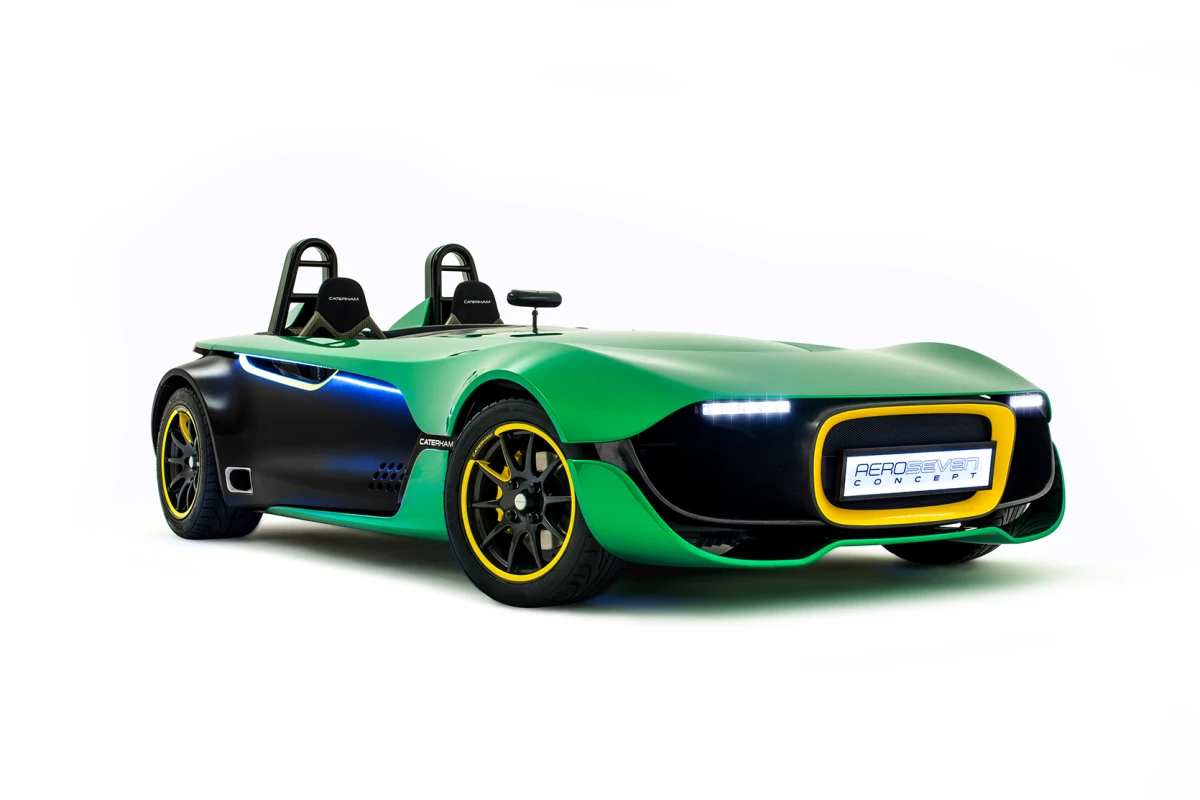The thing about Caterhams is that they’re wonderfully bonkers little cars that beg to be driven. Now the automotive company has taken its Seven CSR chassis and turned it into the Caterham AeroSeven Concept. Unveiled last week at the SingTel Singapore Grand Prix, it uses technologies not found previously in a Caterham and is intended to give the public an idea of the design of future models.
The AeroSeven Concept is a remarkable design departure for Caterham, which has largely stuck to the "if it ain't broke, don't fix it" motto in the past. Where the carmaker had been content to make updates on the basic Lotus Seven design from the 1960s, the AeroSeven Concept has paradigm shift written all over it. However, like all Caterhams, it's still about strapping a lot of power to a very light car. No wonder the dash has a toggle switch under a red safety cover usually associated with missile launchers
In terms of style, the AeroSeven Concept looks as if someone had built a holster to tuck a Caterham Seven in, so it won't get scratched in your pocket. The lines are very sleek and simple, with dry pre-preg carbon fiber panels running fore and aft over an undershell, and the distinctive Caterham grille submerged into what looks like a carbon fiber maw ... a feature which gets a mixed response in the Gizmag camp.

According to Caterham, the design of the AeroSeven Concept is based on Caterham F1 aerodynamic features and is intended not only to provide a new aesthetic, but also improved drag coefficient and downforce for better handling. Even the new rollover structure is designed to improve the aerodynamics.
Given there’s also no windscreen, you'll definitely need a pair of goggles when you take it for a spin at the Nurburgring, and be prepared to pick bugs out of your teeth afterward.
Under the large, flat panels is a CTI-developed 2-liter, 4-cylinder, normally-aspirated Ford Duratec punching 237bhp (176 kW) with 206 Nm (152 lb ft) of torque. That may not seem like much, but bear in mind that we're talking about a power-to-weight ratio of about 365 bhp/tonne. Caterham says that is is also considering the suitability of other engines for the AeroSeven Concept.

The transmission is a Caterham 6-speed manual gearbox pushing the power through the the rear wheels, giving an acceleration of 0 to 100 km/h (62 mph) in under four seconds.
The AeroSeven Concept marks the first time a Caterham has offered traction control. Developed for the Caterham Seven 485, the Caterham Engine Management System is controlled from the racing-style steering wheel, is fully variable, and has launch control. Settings include Road mode, Flash-to-Pass and Pit Lane Speed Limiter.
In addition, there’s an F1-style inboard pushrod double wishbone suspension and 4-piston caliper brakes with ventilated discs in the front, and full independent double wishbone suspension and sliding single piston caliper brakes with solid discs in the rear. Caterham says that it’s also considering using a Bosch “race-derived” anti-lock braking system.

As to the interior, it’s as snug as you’d expect with lightweight racing seats featuring five-point harnesses. But the dash is positively futuristic for a Caterham. Where you'd usually see the most basic of gauges, there's a Graphical Display Unit (GDU) that’s fully interactive with real-time 3D rendered display. Otherwise it's still a pretty minimalist dashboard.
A production version of the AeroSeven Concept is in the works and will be manufactured at the Caterham Cars factory in Dartford, UK. How well this new style language will be received by Caterham purists remains to be seen when the AeroSeven Concept goes on sale in autumn 2014.
The video below outlines the design of the AeroSeven Concept.
Source: Caterham












